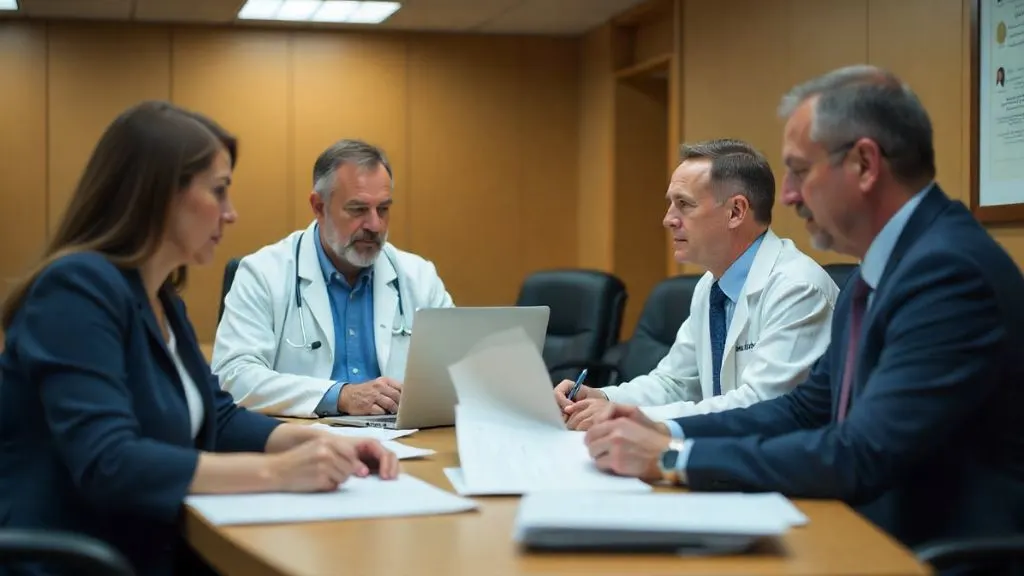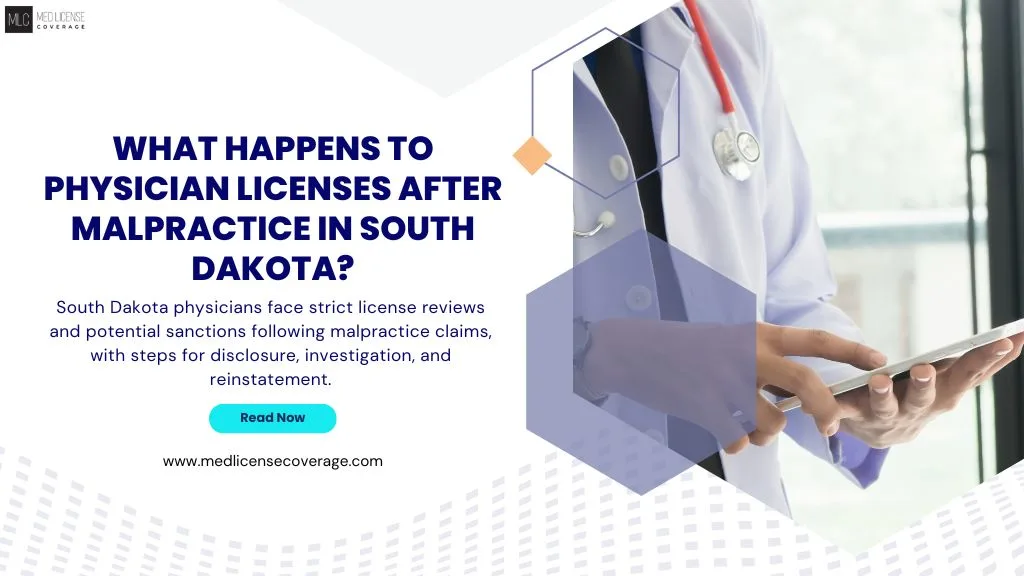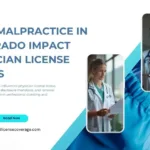Malpractice in South Dakota triggers unique scrutiny from state regulatory boards. Medical boards evaluate each case based on risk, evidence, and professional conduct. Licensing decisions reflect state laws, ethical standards, and public protection mandates.
Regulatory Framework in South Dakota
The South Dakota Board of Medical and Osteopathic Examiners oversees all health practitioner licensing actions. This board has legal authority to assess malpractice in South Dakota and determine appropriate actions. Statutory guidelines allow suspension, revocation, or conditional licensing, whilst malpractice findings warrant regulatory action.
Disclosure Requirements for Licensing
Every malpractice record must be completely disclosed. Applications require listing of all complaints, settlements, and judgments. Omitted or erroneous data prompts immediate evaluation and application denial. Licensing boards verify records through national databases and malpractice insurers.

Role of Physician Licensing Assistance
Physician licensing services provide guidance in the course of the licensing technique. These services manage documentation, make sure proper disclosures are made, and reveal compliance. Professionals rely upon those services to fulfill time limits and reduce risk in the course of complex application reviews.
Investigations and Preliminary Reviews
Malpractice in South Dakota frequently initiates official investigations. The board reviews court records, professional opinion, and treatment records. These professional opinions are conducted to evaluate medical choice-making, affected person effects, and expert conduct.
Consequences of Confirmed Malpractice
A malpractice incident leads to consequences in disciplinary movement. Possible consequences include public reprimands, license suspension, fines, or mandatory retraining. The severity of the event determines the extent of the sanction. Repeated violations increase the risk of everlasting revocation.
Challenges in Medical License Renewal
Medical license renewal turns into difficulty while active malpractice claims exist. Boards delay processing till all investigations are resolved. Renewal programs have to include up-to-date litigation and settlement agreements. Delays are common for unresolved legal matters.
Impact of Settlements on License Status
Settlements are reviewed even if fault is not admitted. High-value settlements often boost issues. Boards inspect the clinical information underlying those payouts. Decisions focus on whether or not the behavior violated care requirements or endangered public safety.
Temporary License Restrictions
South Dakota regulators may additionally impose temporary license limitations. Restrictions encompass supervised practice, practice region limits, or specialty restrictions. These terms protect public welfare even as they allow physicians to remain active throughout critiques.
Role of Continuing Education
Corrective training is frequently required after malpractice. Physicians should complete Continuing Medical Education (CME) in ethics, hazard management, or specialty-specific skills. Successful completion is vital for reinstatement or complete license renewal.
License Reinstatement After Suspension
Physician License Reinstatement Service providers guide specialists through reinstatement techniques. Reinstatement programs must include all remediation steps, clear practice history since the incident, and evidence of corrective action. Final approval depends on documented compliance and conduct improvement.
Public Record and Disclosure
Malpractice in South Dakota will become a public document after board movement. This information appears in national databases and the National Practitioner Data Bank. Employers, insurers, and patients use those resources to verify physician credibility.
Interstate Licensing Implications
Malpractice in a single country impacts licensing in others. South Dakota shares disciplinary information with national boards. Applications submitted in different states may be rejected if unresolved problems exist. Full disclosure is required on all interstate licensing paperwork.
Ethical Standards and Board Review
Ethical violations related to malpractice are taken seriously. Breaches in confidentiality, informed consent, or falsification of statistics trigger critical review. South Dakota boards uphold high ethical expectations as part of the professional licensing code.
Hospital Credentialing Impacts
Hospitals review all malpractice records earlier than granting privileges. Denials from hospitals frequently alert licensing boards. A facility’s refusal to credential based on malpractice history can also cause formal licensing reconsideration or new regulations.
Physician Behavior Under Evaluation
Licensing boards evaluate behavior patterns. Isolated incidents may be forgiven. Repeated proceedings show unsafe practice. Boards use data analytics to identify patterns in malpractice and intervene accordingly.
Role of Technology in Application Reviews
Technology aids the application review process. Licensing portals flag red-flag indicators from malpractice databases. These indicators prompt additional documentation requests and research. Accurate uploads and consistent data lessen the risk of delays.
Legal Consultation and Strategy
Attorneys focusing on licensing defense protect physician rights. Legal advice ensures proper response to board inquiries. Representation is crucial throughout disciplinary hearings, settlement negotiations, or reinstatement programs.
Collaboration with Insurers
Medical liability insurers are working with regulators during dispute resolution. Insurance facts verify charge quantities, protection methods, and agreement consequences. This collaboration strengthens board selections primarily based on validated economic hazards.
Support from Physician Licensing Assistance
Physician licensing offerings act as advocates at some stage in difficult durations. These specialists help put together appeals, collect helpful evidence, and control credential timelines. Strategic planning improves the chances of a favorable licensing selection.
Adapting to Malpractice Trends in South Dakota
Regulations evolve as malpractice trends shift. South Dakota uses data from claims to update standards. Physicians are anticipated to alter exercise techniques to lessen liability and hold active licenses.
Importance of Accurate Documentation
Accurate facts function as the primary defense in malpractice claims. South Dakota licensing forums scrutinize affected person documentation. Discrepancies in notes, prescriptions, or consent bureaucracy raise suspicion throughout the review.
Compliance Monitoring and Reporting
Compliance officers monitor physicians with conditional licenses. Monthly reporting, supervisor evaluations, and CME progress must be submitted. Failure to comply may result in extended restrictions or further sanctions.
Telemedicine and Malpractice Oversight
Telemedicine brings new malpractice challenges. Licensing boards in South Dakota reveal remote treatment outcomes closely. Errors in telemedicine settings are evaluated with the same rigor as in in-person malpractice incidents.
Preventive measures via licensing services
Proactive use of physician licensing services reduces licensing risks. These services maintain accurate documentation, monitor CME progress, and flag troubles before they become obstacles. Preventive measures support uninterrupted practice and faster renewals.
Conclusion
Malpractice in South Dakota influences physician licensing through inflexible oversight, obligatory disclosure, and legal assessment. Each case undergoes a board-led process that determines future license status based on the severity and resolution of claims.
Strict documentation, legal representation, and corrective schooling form the path to reinstatement or renewal. Medical license renewal faces delays if malpractice remains unresolved. State governments follow uniform guidelines primarily based on public safety, moral standards, and historical behavior.
Professional guidance from physician licensing services strengthens each segment—from initial disclosure to complete license recovery. Long-term compliance ensures professional credibility and career growth regardless of prior malpractice incidents.







